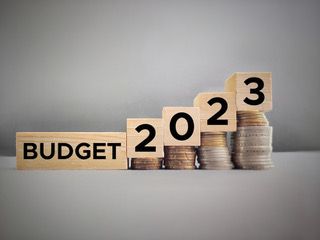As part of the Federal Budget the Albanese Government have announced the largest increase to Commonwealth Rent Assistance in more than 30 years. The measure, which is expected to take effect from September this year will increase the maximum rent assistance payments by 15%.
Commonwealth Rent Assistance is paid to people who receive certain social security pensions or benefits, for most retirees that’s the Age Pension. To qualify you also need to pay a minimum amount of rent for your principal home (known as the rent threshold). Currently the threshold is $70/week if you are single and $114/week if you are a couple. The thresholds are low compared with most rent prices which means very few people miss out because their rent isn’t high enough.
The rent you pay in excess of the threshold attracts rent assistance at 75c per dollar of rent, which on the face of it is a very generous formula. The problem for most people is the amount of rent at rent assistance cut out. For a Single person that’s $175/week and for a couple it’s $212/week.
Currently the maximum rent assistance you can receive is $78/week for singles and $74/week for couples.
As part of the Federal Budget the government announced a 15% increase in the maximum rent assistance payment. The increase would see singles receive a maximum payment of around $90/week and couples receive around $85/week.
Based on the current thresholds it would mean that you receive assistance on the rent you pay up to around $190/week for singles or $227/week for couples - a long way short of most rents.
According to PropTrack the median advertised rent price was $500/week, an increase of 2% on the previous quarter and 11.1% on the previous year. Currently, a single pensioner would have their rent assistance cover $78 of the $500 weekly rent while for a couple their rent assistance would cover just $74, leaving them to cover the other $426/week. The increase to rent assistance which is likely to take effect from September, increasing the payments to around $90/week and $85/week respectively, while welcome, is simply too little too late to keep up with rental increases.
A.Prof Bradbury explains that average rents are actually a poor measure of what is really going on because of the lag between rents rising and seeing that in the statistics. He says “That’s because rent increases occur when a lease comes up for renewal or when a property is re-let. So while ABS numbers are showing average rents in February 2023 are just 2.2% above February 2020 research by SQM Research shows advertised rents are actually up around 35% over that period.”
The Henry Tax Review (2009) recommended linking the upper rent threshold to rent prices for the 25th percentile of one and two bedroom dwellings in capital cities. If that policy was to be adopted A.Professor Bradbury’s calculations show eligible pensioners could receive rent assistance up to a rent of $354/week, more than doubling the rent assistance payment to around $215/week for singles.
Rent Assistance is a crucial element for many retirees, as it applies across more than private rentals it can also apply in caravan parks, land lease communities, retirement villages and granny flat arrangements. Bruce Bradbury, Associate Professor at the University of NSW, warns that the rent crisis is set to spread and get worse, placing serious stress on many vulnerable Australians. In the long run, the best solution is to provide more housing but that takes time, investment and potentially changes to government policy. The simplest short-term response is to financially support renters, and sadly the 15% payment increase won’t go far enough for many.


